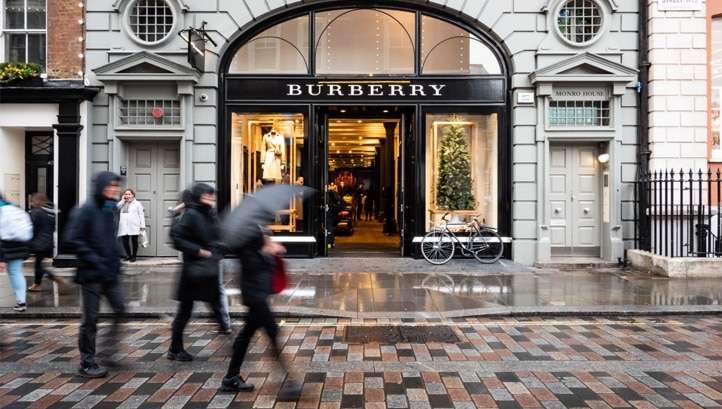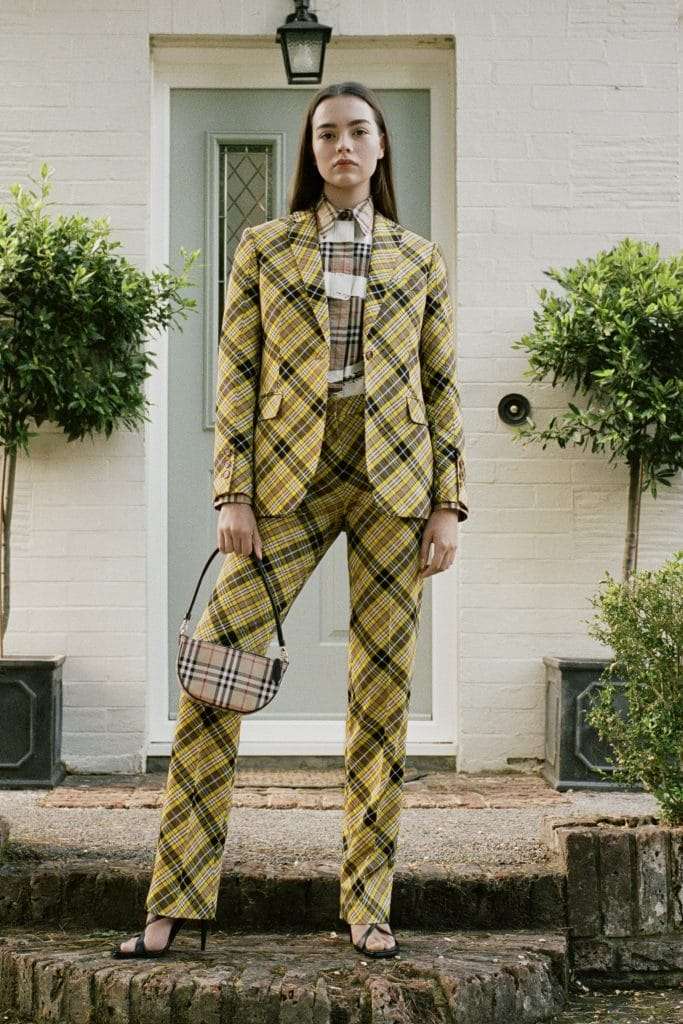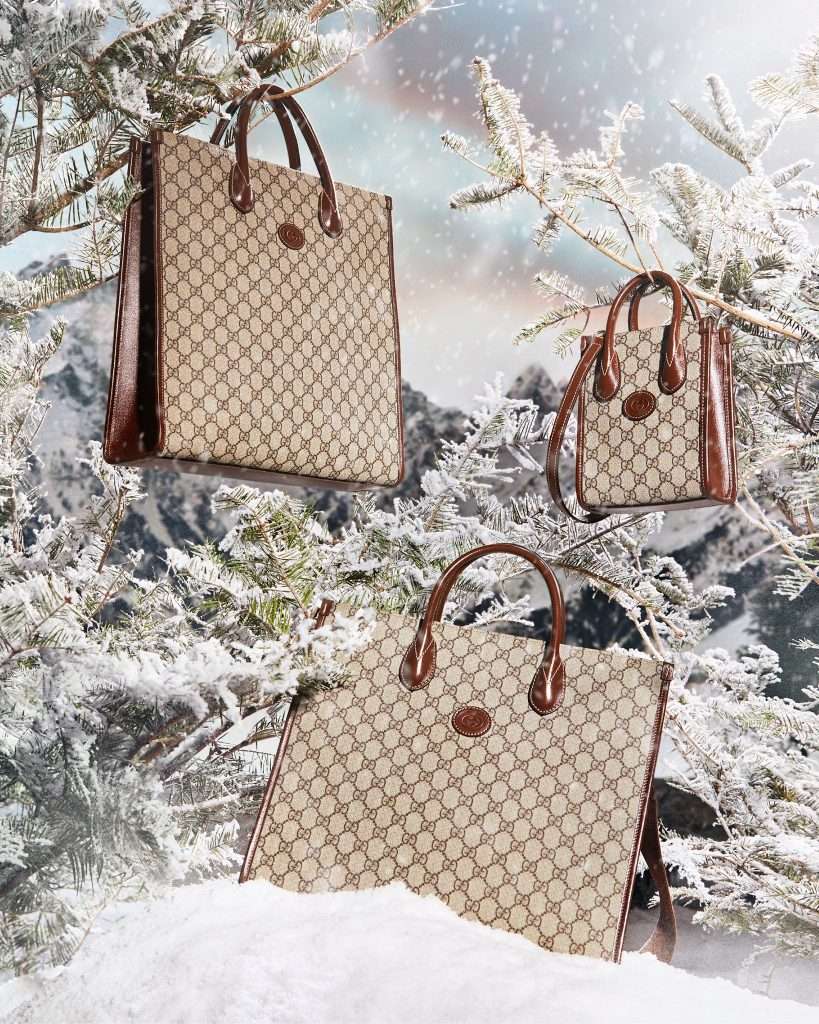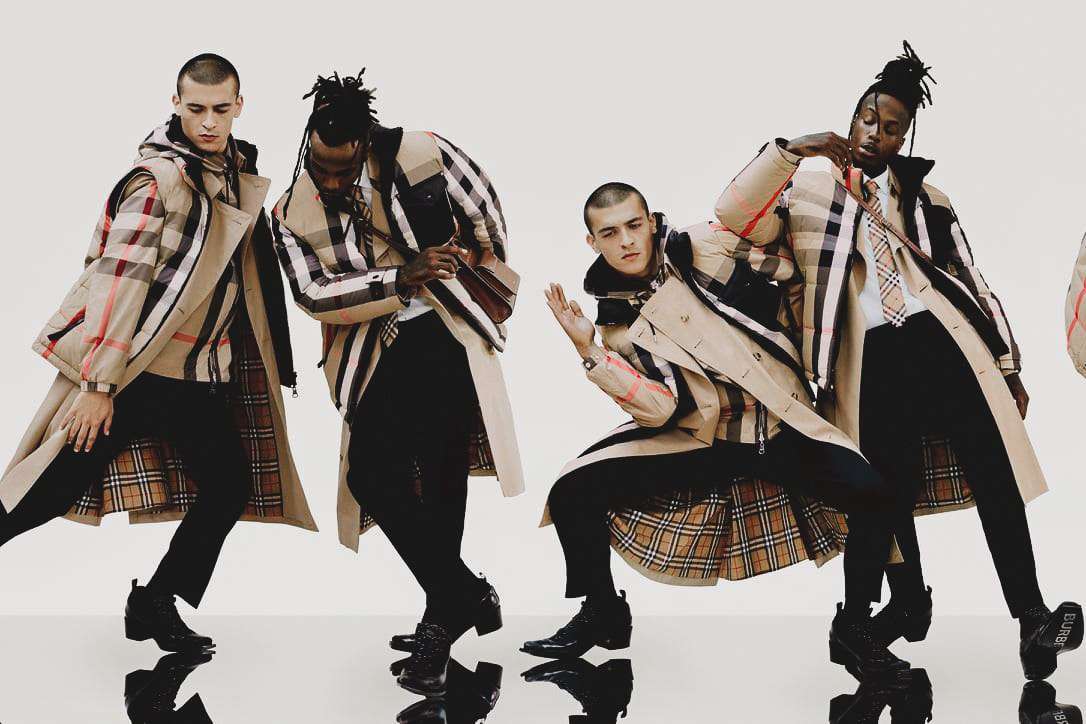British luxury fashion house Burberry has announced a partnership with clothing rental and resale platform My Wardrobe HQ, as part of its climate positive targets for 2040.
Wearing Burberry is getting more affordable—and more sustainable—thanks to the brand’s recent announcement. It’s now making a selection of its iconic coats, handbags, and accessories available for rent or secondhand purchase on the British-based app, My Wardrobe HQ.
“Our partnership with My Wardrobe HQ is complementary to our broader strategy to become climate positive by 2040, supporting the principles of a circular economy for luxury,” Pam Batty, Burberry VP of corporate responsibility, told Vogue Business. “This includes expanding reuse, repair, donation and recycling routes and developing new partnerships and revaluation solutions.”
The move comes after the label partnered with The RealReal in 2019 on a secondhand collection. This marks its first participation in a rental model and a key component to its sustainability benchmarks.

According to My Wardrobe HQ, Burberry was one of the most requested brands on the platform. Purchased new, a Burberry coat can cost more than $2000 at retail; rented through the app, it will run about $225 a week, or, if purchased secondhand, an option within the My Wardrobe HQ platform, it runs about half the retail price.
The luxury label will be providing the bulk of the merchandise, with select pieces from VIP clients, and members of the peer-to-peer rental and re-sale platform.
Burberry sees the move as a way to curry favor with existing customers, many of whom are now exploring resale and rental models. It’s also aiming to build its customer base among sustainably-minded consumers. Participating in secondhand and rental markets may also help sustainability metrics in the future, according to experts, by helping brands to better understand the relevance of archived collections and the changes in consumer preferences.
Burberry sustainability
Sustainability has been a core consideration for the brand for nearly two decades. Its most recent five-year Responsibility Agenda touches on all areas including all products, global operations, and the luxury industry at large.
It ranked in the top two in the 2021 and 2020 Dow Jones Sustainability Index (DJSI) for the ‘Textiles, Apparel & Luxury Goods’ sector, and landed leading positions within the Product Stewardship and Social Reporting categories. The DJSI is a trusted benchmark valued by investors seeking ESG-minded companies. It looks at a company’s governance, economic, environmental and social performance, including supply chain management and climate change strategy.

“Product is at the very heart of our business, so I am particularly pleased of our leadership position in Product Stewardship, which recognises our progress in embedding sustainable design and manufacturing practices to ensure our products make positive social and environmental contributions,” Batty said last year.
“We believe ESG disclosure plays a key role in driving meaningful change, through sharing our progress and best practice we can help drive accountability, help others in our industry to improve and learn from our peers to build a more sustainable future.”
Burberry launched an in-house after care program for trench coats, handbags, and accessories in 2018, aimed at reducing waste. The move was part of its efforts to decrease clothing incineration—a move pushing the brand closer to its circularity targets. It wants consumers to keep their Burberry products for as long as possible.
Secondhand, first choice
Resale platforms are generating big buzz; Paris-based certified B Corp Vestiaire Collective has earned unicorn status generated by its peer-to-peer resale and celebrity capsule collections. U.S.-based secondhand platform ThredUp is predicting the industry will double in size by 2026 to more than $77 billion. The resale market is growing across other sectors, too, with luxury watch resale platform WatchBox earning the funding of celebrities including NBA legend Michael Jordan. Like Vestiaire Collective, WatchBox is now also valued at more than $1 billion.
But despite the potential, brands have been hesitant to embrace the secondhand and rental trends. Buyback programs can be cumbersome and costly, and they can eat away at the upstream sustainability efforts many brands are making. The third-party platforms say they have helped to absorb some of those costs and risks, and with luxury brands opening up capsule collections, like Gucci and Ganni both did recently, the secondhand market is becoming as aspirational as new retail.
“Rental and resale allows younger generations who don’t have as much disposable income to actually get a feel for a luxury brand,” My Wardrobe HQ co-founder Tina Lake told Vogue Business. “They can rent it out, see if they like the brand and actually perhaps save up to buy that special item. They can then rent it out to make the money back.”

According to Lake, the target rental customer on the platform is between 25 and 35 years old—the same target audience for the problematic fast-fashion market. Pivoting that customer toward higher-quality secondhand merchandise could help make a dent in emissions, even despite a study released earlier this year that said otherwise. That study, published over the summer in the peer-reviewed journal Environmental Research Letters, looked at five outcomes for clothing disposal. It found that clothing rental, due mainly to the shipping and packaging involved, had the biggest footprint.
But Lake says the offsets from rental and resale are significant. She says the study didn’t take into consideration things like water usage. “The average pair of jeans requires [an estimated] 7,800 litres of water for production,” Lake says. “If 20 people each buy a pair of jeans this requires 156,000 litres of water. If 20 people rent one pair of jeans and the jeans are washed between rentals (25 litres/wash) the total water cost to the planet is 8,300 litres in total. That’s a huge 147,700 litre water saving.”
My Wardrobe HQ also favors ozone cleaning over dry cleaning, which reduces chemical and energy use, among its many sustainability efforts.
“We believe both rental and resale are important to the sustainability journey that everybody is going on,” says Lake. “We’re all guilty of having bought that item that was a poorer quality or just never wearing it. We give all of our brand partners, all with exceptional quality, the opportunity to give their customers that experience of luxury without having to commit to buying upfront.”
Burberry is turning the rentail model into a giveback program as it will be donating 40 percent of profits from each transaction on the app to its long-time charity partner, Smart Works. The organization provides high-quality professional clothes and coaching to disadvantaged women seeking employment.
My Wardrobe HQ is currently only operating in the U.K. and Europe, but it has plans to launch in the U.S. next year.


